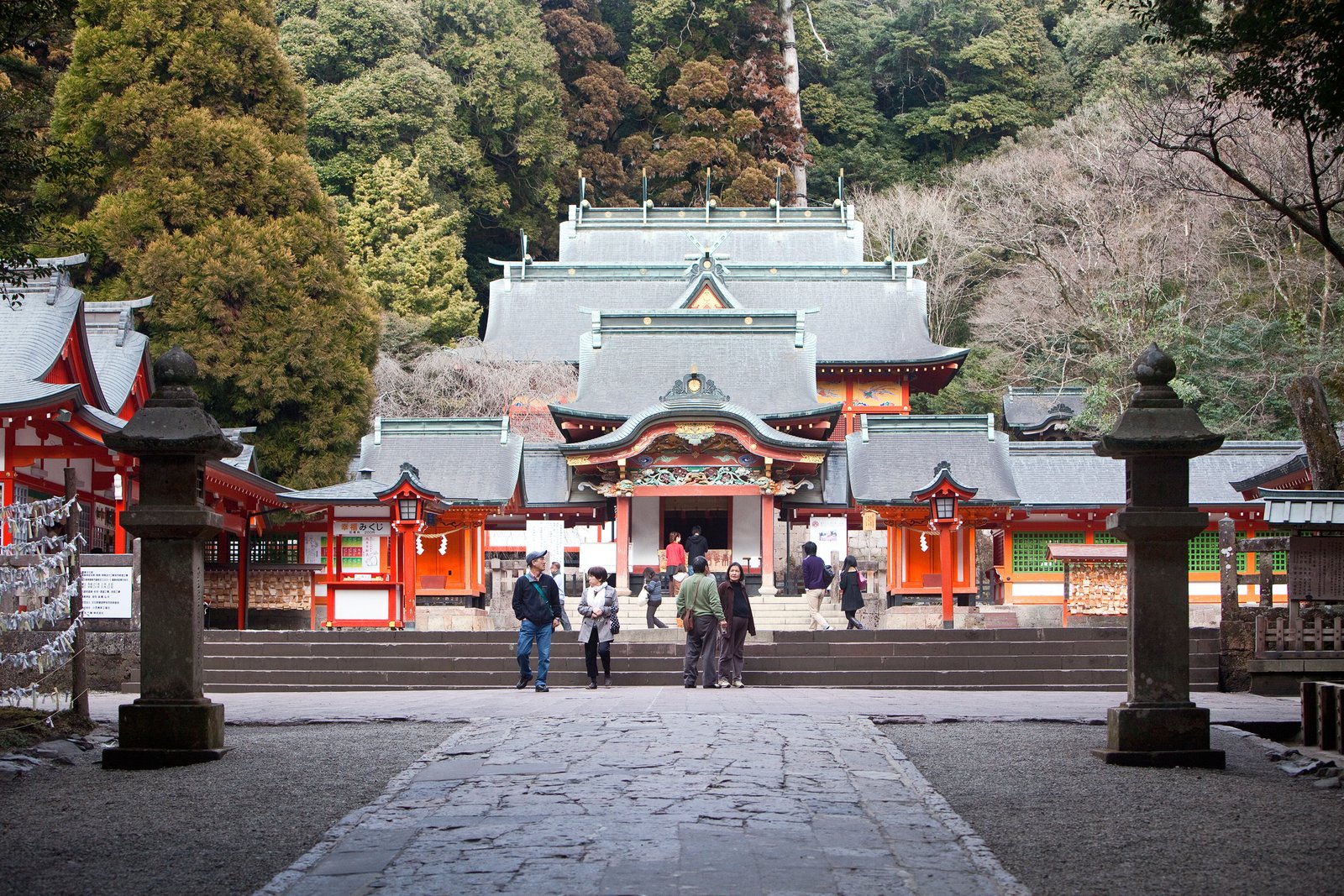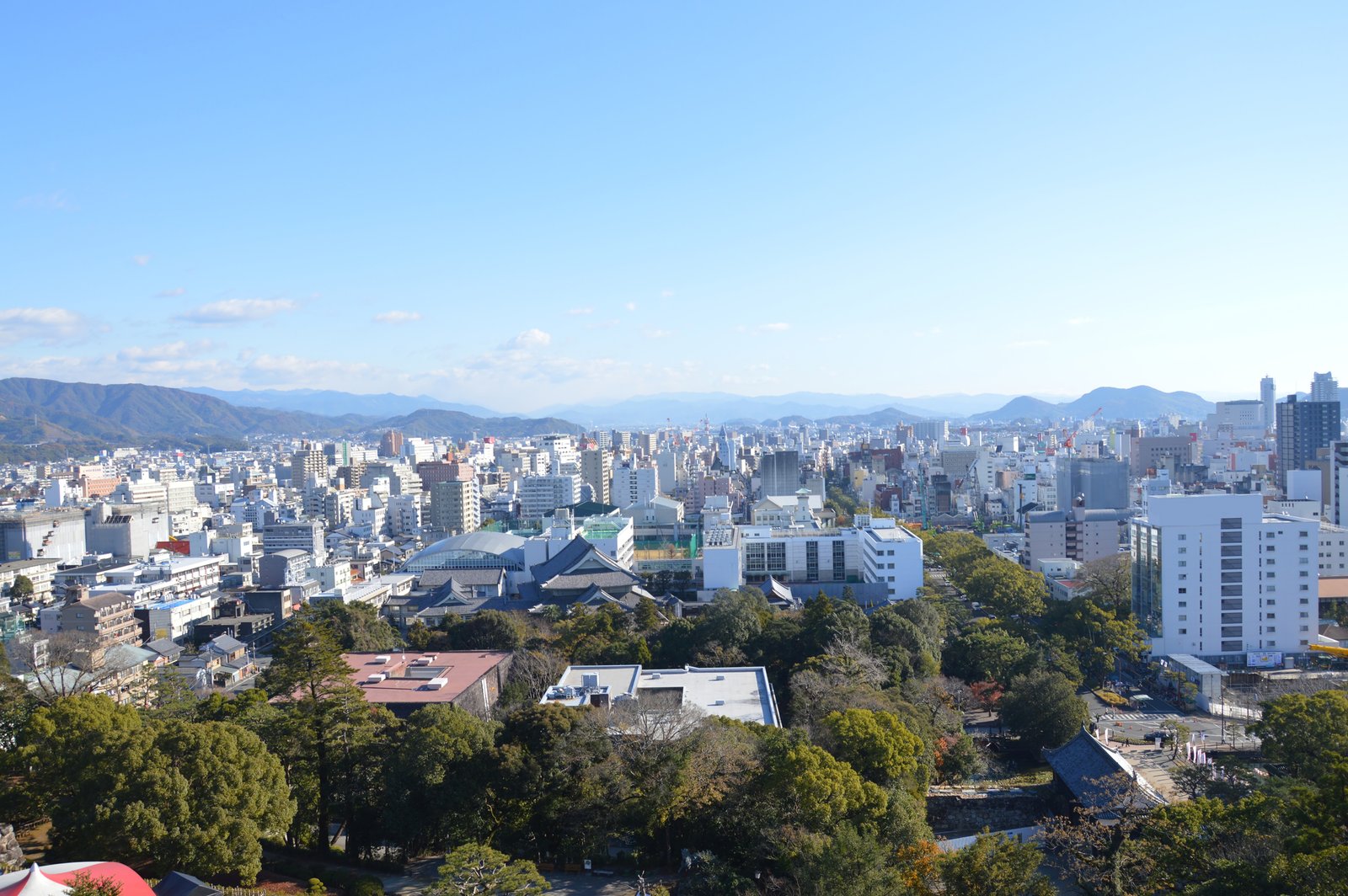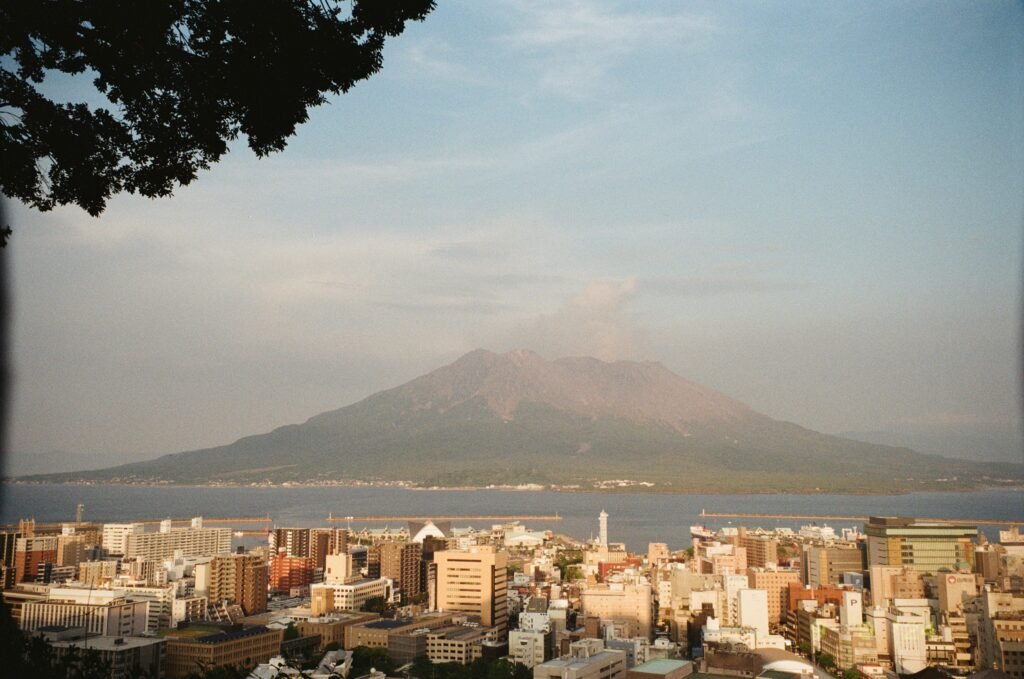
Dramatic view of Kagoshima cityscape with Sakurajima volcano in Japan.
Have your first taste of Kagoshima’s Black Meat Trio on a misty autumn morning in southern Japan. The Kurobuta pork, Kuroge Wagyu beef, and Kurodori chicken are incredibly rich. This experience shows you how volcanic soil, ocean breezes, and tradition make Japanese meats special.
Exploring Kagoshima’s markets, you’ll learn about these black meat delicacies. Each dish has a story, from the smoky yakiniku grills to the agedashi tofu with local shochu. Kagoshima’s food culture is more than just eating. It’s a conversation between land, livestock, and history.
Key Takeaways
- The Black Meat Trio represents Kagoshima’s culinary identity through pork, beef, and chicken.
- Volcanic terrain and mild climates uniquely influence the flavor profiles of these meats.
- Traditional methods preserve centuries-old techniques while innovating modern dishes.
- Kagoshima’s food culture blends regional pride with global gastronomic trends.
- Exploring these black meat delicacies offers a window into Japan’s agricultural heritage.
Introduction to Kagoshima’s Unique Culinary Identity
Standing atop a ridge, breath in the smoky air mixed with sea breeze. This scent fills every dish in Kagoshima. The island’s food is a mix of volcanic soil and tradition, creating dishes that taste like the earth itself. The active volcano’s ash-rich soil makes ingredients special, defining the
The Volcanic Landscape That Shapes Local Cuisine
Volcanic soil changes ingredients into edible landscapes. Minerals from Sakurajima add flavor to rice, veggies, and even water for the Black Meat Trio. Chefs see the volcanic cuisine influence as sacred, adding subtle iron notes to meats. The volcanic terroir also shapes cooking methods, like smoky grills that mimic the island’s fire.
Historical Influences on Kagoshima Food Culture
Kagoshima’s isolation kept its Kagoshima food heritage pure. Trade brought spices and techniques. Dutch traders introduced soy-based sauces, and samurai-era methods evolved into today’s curing. Yet, the heart of Kagoshima’s food remains in Japanese culinary traditions—simple yet full of respect for nature’s gifts.
Why The Black Meat Trio Represents Kagoshima’s Gastronomic Soul
The Black Meat Trio captures the land’s spirit. Black Berkshire pork’s fat holds volcanic minerals, and the chicken’s flavor mirrors the sea cliffs. Each bite is a dialogue between Sakurajima’s influence and human skill. A chef in a century-old izakaya once said, “We don’t cook ingredients—we awaken what the earth has already created.”
What Exactly Is The Black Meat Trio?
Walking through Kagoshima’s bustling fish markets, you’ll discover the Kagoshima black meats. These are a trio of Japanese premium proteins that show the region’s culinary heart. They are Kurobuta pork, Kuroge Wagyu beef, and Kurodori chicken. Their deep black color hints at their rich history, but it’s their texture and taste that truly shine.
“It’s not just pigmentation,” said Hiroshi, a third-generation butcher. “These meats carry fat like rivers through marble—they melt, they cling, they transform.”
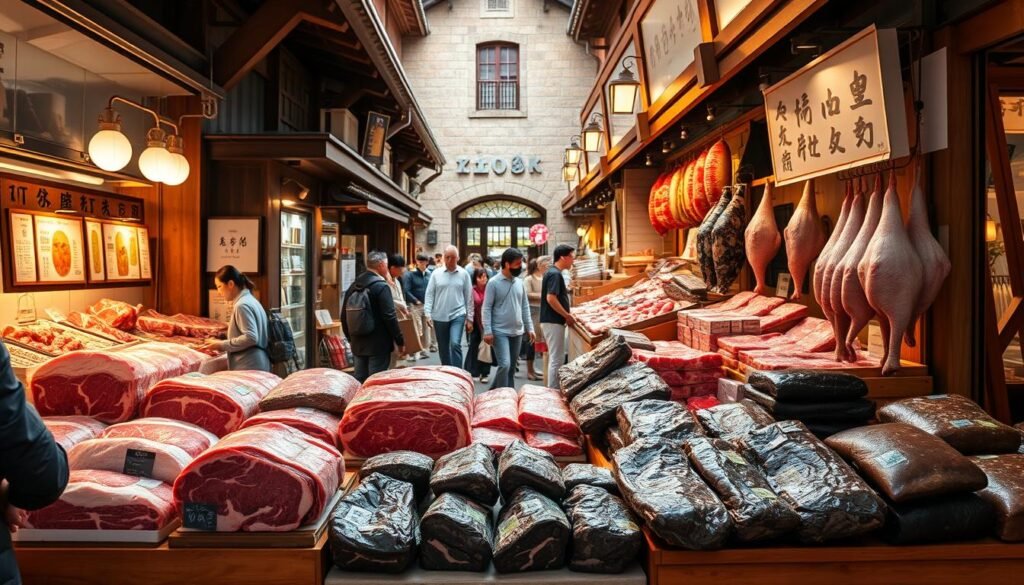
Kurobuta pork is incredibly tender, with a velvety texture that melts in your mouth. It’s a big difference from the leaner cuts found elsewhere. A dish like savory pork ramen here uses this richness to create broths that cling to chopsticks.
Kuroge Wagyu has a deep, earthy umami that unfolds slowly, like a slow-brewed tea. Each bite reveals layers of grass-fed complexity. And Kurodori chicken is like tasting the forest itself, with its dark plumage and tender, gamey flesh.
- Kurobuta Pork: Marbled with sweet, silken fat
- Kuroge Wagyu Beef: Aged to amplify wildflower and mineral notes
- Kurodori Chicken: Juicy flesh with a subtle wild-game depth
These aren’t just meats—they’re storytellers. Each bite carries the island’s volcanic soil, the farmers’ patience, and traditions passed like heirlooms. To taste them is to stand at the crossroads of Kagoshima’s past and present, ready to uncover why these proteins have become its edible anthem.
Kurobuta: The Crown Jewel of Kagoshima Pork
Start your journey into Kagoshima’s culinary heart at dawn on a misty hillside farm. There, you’ll see black Berkshire pigs roaming freely. This is a stark contrast to industrial farming.
Their story goes back centuries to when these pigs first came to Japan. Through Kurobuta breeding, they evolved, focusing on quality over quantity. Farmers here believe patience is key to perfection, seen in every marbled slice of premium Japanese pork.
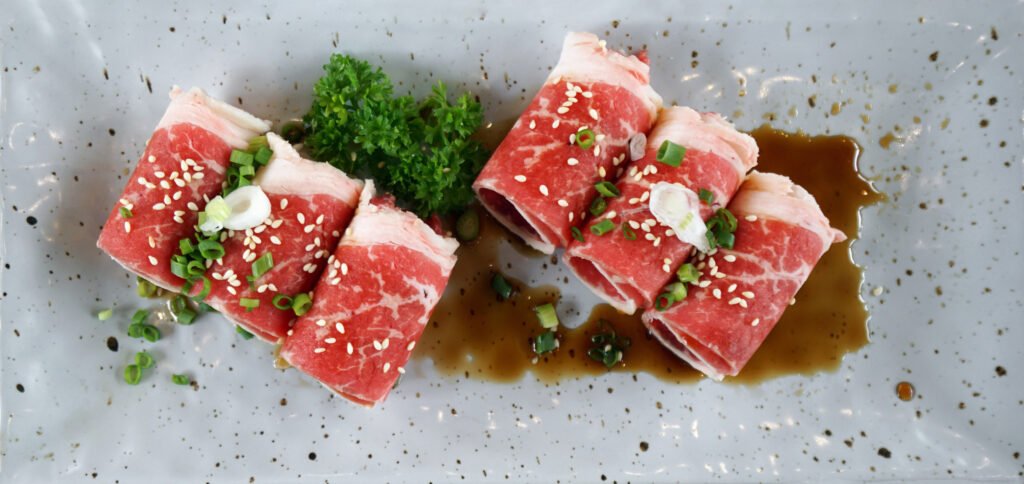
Premium Kagoshima Kurobuta Pork Shoulder Slice Served On Ceramic Plate With Sauce And Shopped Scallion. Top View.
Origins and Breeding of the Black Berkshire Pig
These pigs aren’t just raised; they’re nurtured. They’re fed sweet potatoes and cared for by families who’ve bred Kurobuta for generations. Their slow growth ensures the best fat distribution.
One farmer said,
“We measure success not in speed, but in the depth of flavor that lingers.”
Distinctive Qualities That Make Kurobuta Special
What makes this pork special? It has a buttery texture and a sweetness that’s unmatched. Its marbling is so fine, it rivals Kobe beef.
Studies show its fat content is 2-3x higher than standard pork. This is evident when you try a slice of premium Japanese pork grilled with salt.
Signature Kurobuta Dishes Worth Traveling For
- Beyond tonkatsu: Crisp crust enclosing tender, rose-pink flesh
- Sukiyaki: Thinly sliced meat that soaks up soy-sake broths like a sponge
- Kagoshima pork specialties like buta no kakuni manju: Pork belly steamed in buns, a regional delicacy
Every bite of Kagoshima pork specialties tells a story of tradition and terroir. This is pork transformed into poetry. It’s a testament to why the black Berkshire pig is a crown jewel in global gastronomy.
Kuroge Wagyu: Experiencing Kagoshima’s Premium Black Beef

Try Kagoshima’s Kuroge Wagyu for the first time at a misty farm. The soil is volcanic, and the air smell of grass. The cattle graze under ancient oaks. This is where Kagoshima’s Japanese premium beef was born, blending tradition and terroir.
How Kagoshima Wagyu Differs From Other Japanese Beef
Kagoshima Wagyu is sweeter than Kobe or Matsusaka beef. This is because of the region’s mineral-rich feed. The fat in the meat melts easily, making it velvety.
Ranchers use old methods to make the meat tender. They massage the calves daily. “Our cattle live stress-free,” said a third-generation breeder. “Their calm lives mean pure flavor.”
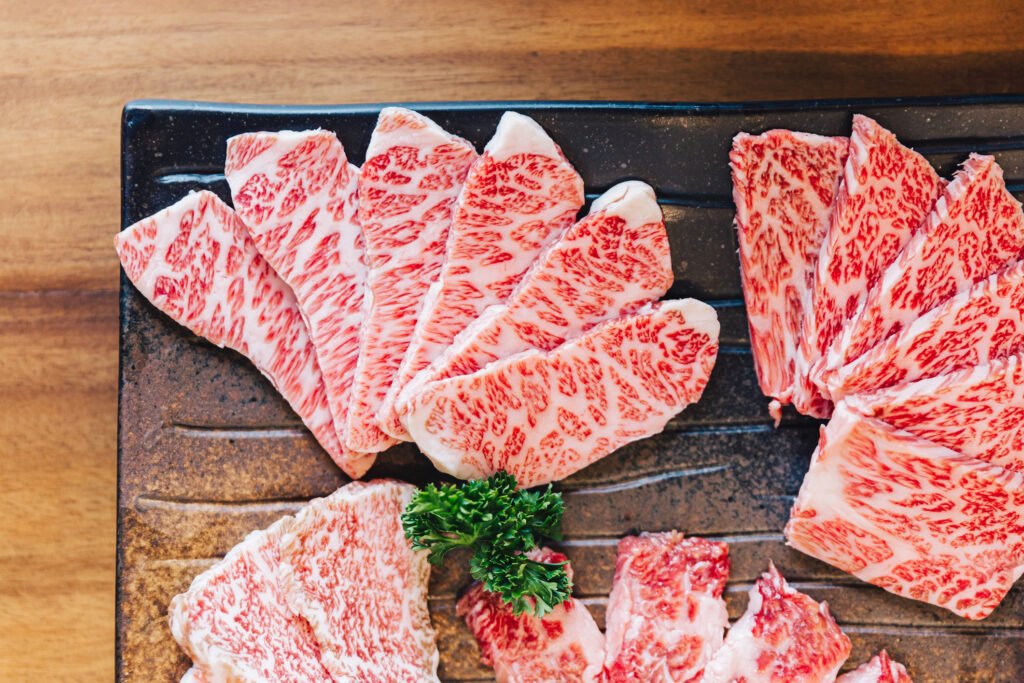
Traditional Preparation Methods and Modern Innovations
In a century-old izakaya, chefs seared ribeyes over charcoal. This method has been used for centuries. Yet, a Michelin-starred chef also serve Wagyu dumplings with yuzu, a modern twist.
Both show how Kagoshima balances tradition and creativity. The secret is keeping the meat’s essence while pleasing global tastes.
Tasting Notes: The Complex Flavor Profile of Kagoshima Beef
At a private tasting, the first bite of Kagoshima Wagyu is amazing. It has caramelized umami and a citrusy finish. The silky texture is unlike any other premium cut.
This mix of tradition and terroir makes the Black Meat Trio special.
Kurodori: The Lesser-Known Black Chicken of Southern Japan
In Kagoshima’s misty hills, the Japanese black chicken, or Kurodori, has a secret. It’s part of the Black Meat Trio and almost disappeared after Japan’s post-war changes. At a remote farm, a third-generation breeder displays his flock. They have black feathers and sharp eyes, adapted to Kagoshima’s volcanic soil.
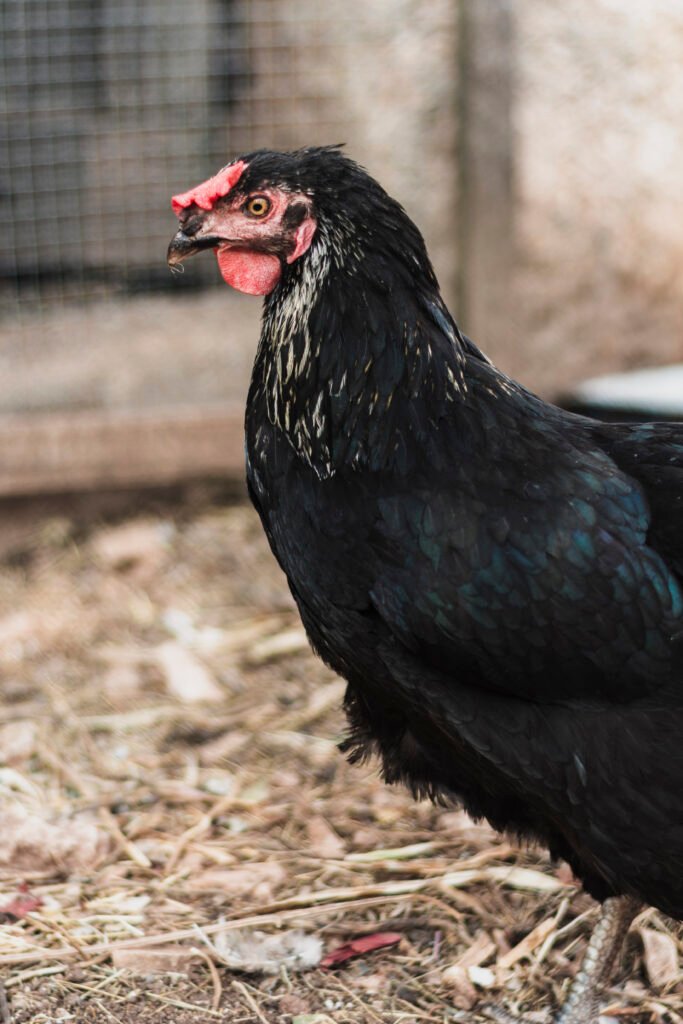
Black hen outdoors in the farmyard
The farmer said, “Their meat carries the earth.” As he gives a raw Kurodori sample. Its scent is deep and smoky. At a kushiyaki stall,try the taste of their broth. It is rich and has a wild flavor.
| Feature | Kurodori Chicken | Conventional Chicken |
|---|---|---|
| Flavor Profile | Rich, gamey, mineral notes | Mild, lean, uniform taste |
| Texture | Firm, collagen-rich | Tender, less chewy |
| Availability | Rare Kagoshima chicken varieties | Global mass production |
At Yakitori no Sato, chefs honor Kurodori. They make kurodori nabe pot dishes with local shiso leaves. Kurodori poultry is a rare find in Kagoshima, a treasure waiting to be discovered.
The Culinary Tour of Kagoshima: Markets, Restaurants, and Hidden Gems
As you journey through Kagoshima’s culinary heart, starts at dawn at the Kagoshima food markets. The cobblestones are misty. Butchers slice black meat dining experiences with artist precision. The air buzzes with the smell of kurobuta grilled on charcoal.
Vendors share secrets about the silkiest wagyu cuts. “The best cuts tell stories,” one vendor said, pressing a slab of marbled beef into a tourist’s palm. “Feel the history in the texture.”
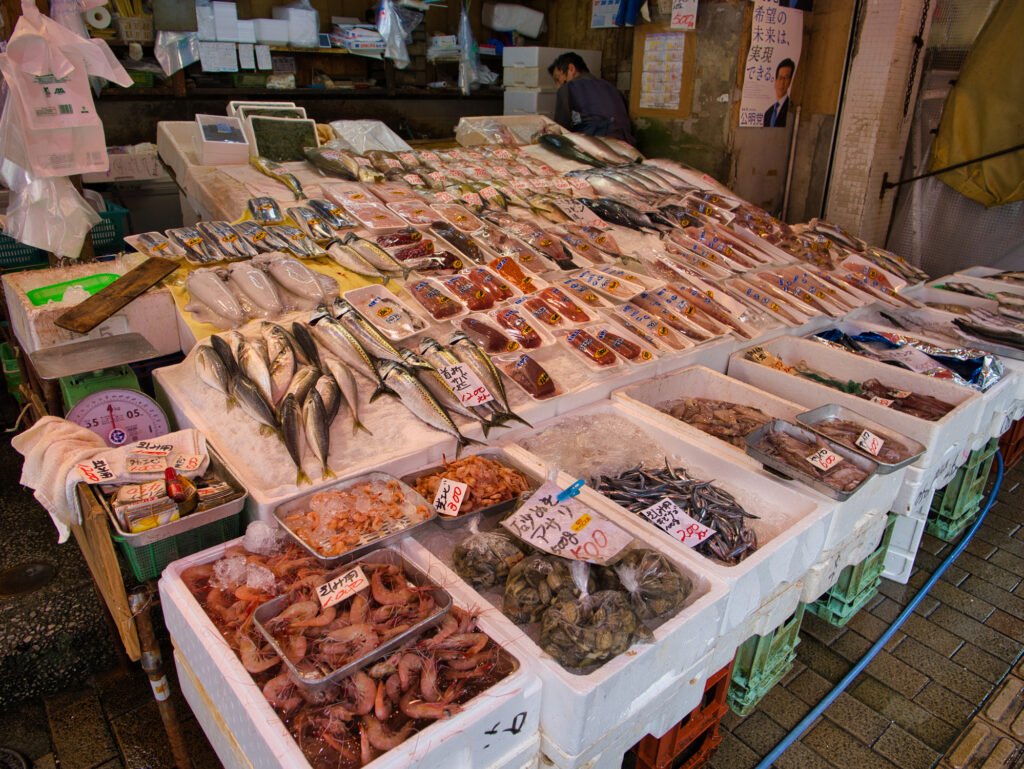
Fresh Seafood Stall On A Street In Central Kagoshima, Kyushu, Japan, Displaying A Vibrant Assortment Of Fish, Shellfish, And Packaged Seafood On Ice
Next, visit the best Kagoshima restaurants. Michelin-starred temples like Yakultsu pair kurogeu with volcanic salt. Yoshida-Ya in Kanekuni Market serves tonkotsu ramen where pork melts like butter.
But the hidden corners are the real stars:
- A samurai-era mansion turned into a private kaiseki dining room, where kurodori chicken simmers in kelp broth over a sunken hearth
- A tiny alleyway yakitori stall serving 10 guests nightly, its skewers glazed with local miso
- A farm-to-table cellar where guests select cuts from refrigerated chambers before watching them become teppanyaki art
These hidden culinary gems in Japan are all about intimacy. The farmer’s daughter shows you how to age wagyu in cedar boxes. The chef carves kurobuta into paper-thin slices with a 100-year-old blade.
Every bite here is a dialogue between tradition and innovation. It shows Kagoshima’s unyielding passion for excellence.
From Farm to Table: Meeting the Producers Behind the Black Meat Trio
In Kagoshima’s volcanic foothills, a journey starts. Mist clings to the earth, and sweet potato fields mix with sea air. Here, Kagoshima sustainable farming turns tradition into taste. Explore family-owned farms where Japanese meat producers mix old wisdom with new care.
“The soil here is alive—it speaks to the pigs, the cows, the chickens,” said one farmer, his hands stained with volcanic soil. “Our ancestors heard it; we do too.”
At the core of Black Meat Trio production, you see practices like rotational grazing for Kurogeu Wagyu. Kurodori chickens forage in environments that show artisanal Japanese farming. Farmers use sweet potatoes grown locally, their vibrant flesh nurtured in volcanic loam.
You’ll see a breeder play Mozart to his herd, a tradition studied by researchers. Each pig, named and watched daily, shows this hands-on approach.
- Volcanic soil enriches sweet potatoes fed to Kurobuta pigs
- Rotational pastures preserve land health for Wagyu cattle
- Free-range Kurodori chickens forage on native flora
Their stories show how Kagoshima’s climate shapes flavor. Warm winds and mineral-rich terrain create unique tastes. Sunlight through pine groves adds to the terroir of these meats. As one farmer said, “Our land isn’t just soil—it’s why their taste is so special.”
Pairing Suggestions: Kagoshima Shochu and Other Local Accompaniments
Exploring Japanese shochu pairings in Kagoshima is like discovering a secret world of tastes. Start at a bright izakaya where a skilled sommelier serve sweet potato Kagoshima drink specialties next to tender Kurobuta pork. The shochu’s smooth sweetness match the pork’s rich flavor perfectly.
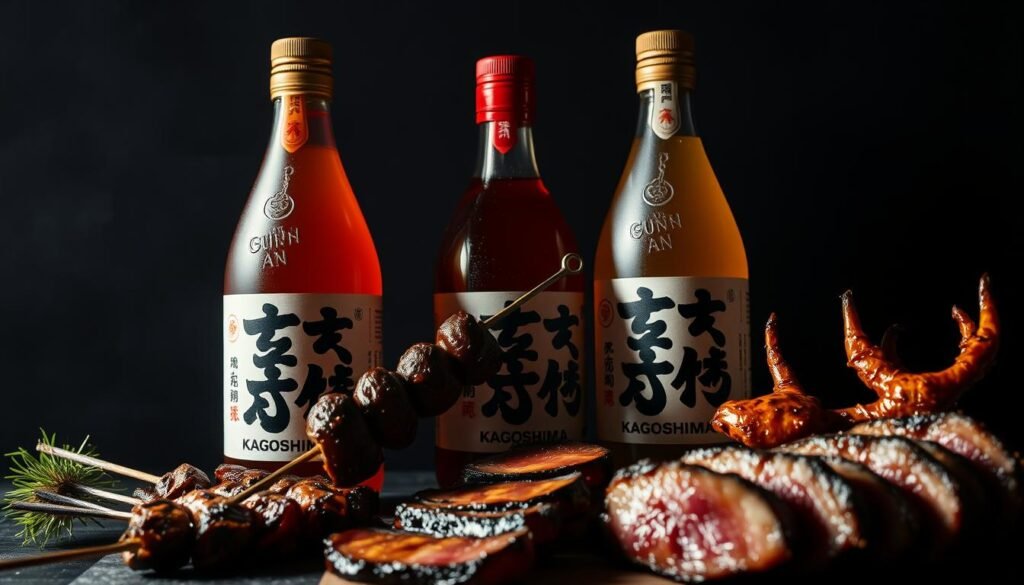
- Sweet potato shochu’s earthy warmth elevates Kurobuta’s delicate sweetness
- Rice shochu’s crisp acidity balances Kuroge Wagyu’s buttery depth
- Barley shochu’s herbal notes dance with Kurodori’s earthy gaminess
Local sommeliers say chilled shochu (6–8°C) brings out new flavors. A ponzu’s tang matches Kagoshima’s citrus sauces, while wasabi adds a spicy kick. Wild vegetables like fiddlehead ferns add a grounding texture to rich meats.
“Pairing isn’t science—it’s harmony,” said a third-generation distiller, pouring barley shochu beside smoky Kurodori. “Let the land’s flavors converse.”
In your Japanese food pairing guide, note to: pair wagyu with citrus-marinated radishes, and serve wild boar mushrooms with sweet potato shochu. These black meat accompaniments are more than sides. They tell stories that connect old traditions with new tastes.
Cultural Significance: How These Meats Shape Kagoshima’s Identity
At Kagoshima’s autumn Kagoshima food festivals, you’ll see the black meat cultural importance shine. People cheer as farmers show off Kurobuta pigs. These moments celebrate Japanese meat culture and Kagoshima culinary traditions.
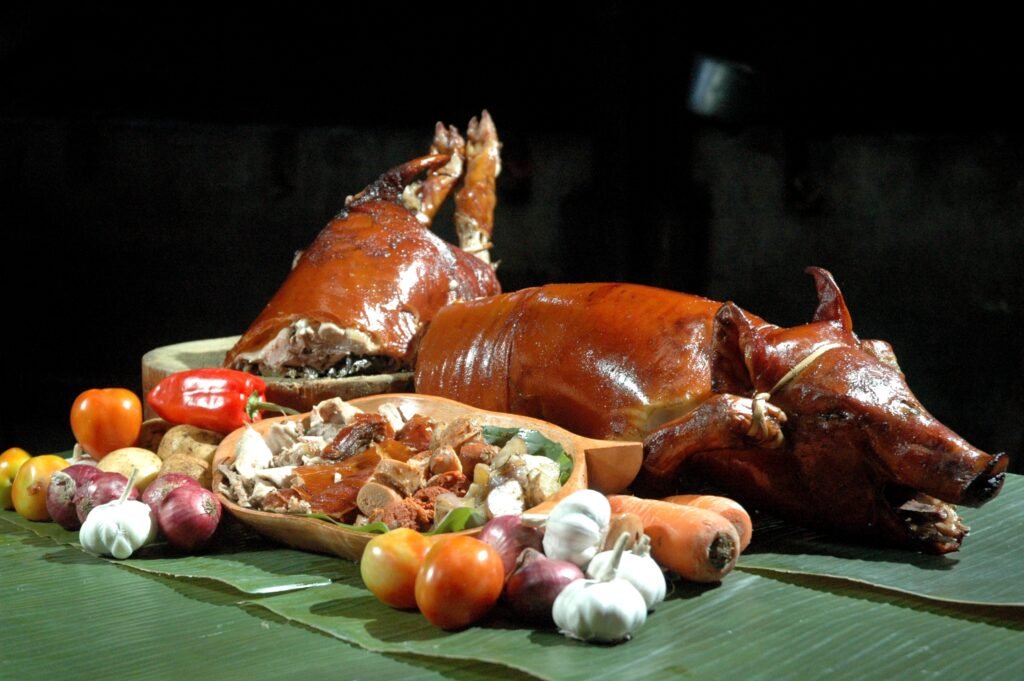
Close-up of roasted pork with ingredient on banana leaf
Each festival is a mix of smoke, laughter, and grilled meat smells. It shows how the Black Meat Trio is a big part of Kagoshima’s heart.
“This pig isn’t just livestock. It’s our promise to future generations.”
An elderly breeder once said, “This pig isn’t just livestock. It’s our promise to future generations.” His words sticks with you as you watch how Wagyu and Kurodori are part of big life events.
These traditions are passed down, keeping the connection between generations strong.
The meats also boost Kagoshima’s economy. Black meat cultural importance helps farms, tourism, and exports. Chefs like Aoki-san say Kagoshima is the heart of Japan’s meat legacy.
The trio’s story is more than taste. It’s a bond between land, people, and time. Every bite celebrates heritage and supports the future.
An American Perspective: How The Black Meat Trio Compares to US Premium Meats
When you look at Japanese vs American meat traditions, the Black Meat Trio shows big differences. These differences come from where the meat is raised and the way it’s made. Try Kagoshima’s Kurobuta, Kurogeu, and Kurodori and American meats side by side. This shows you two ways to make meat truly special.
In the premium meat comparison, Japanese makers focus on detail. For example, Kurobuta pork is known for its smooth marbling. In contrast, American heritage breeds like Berkshire from the U.S. South offer a richer taste.
The flavors of Kagoshima Wagyu and dry-aged Kansas grass-fed beef are quite different. But both are made with great care. A chef in Portland mixes gourmet meat differences by aging Kurodori chicken with Japanese methods. He then pairs it with Oregon truffles, creating a unique taste.
“The Japanese approach is poetry in precision; American producers celebrate bold individuality. Both are essential to global gastronomy.”
Kagoshima’s small area helps make flavors very intense. But America’s big spaces let meat taste different in many ways. Think of Texas bison or Niman Ranch pork. This premium meat comparison isn’t about who’s better. It’s about seeing how place, culture, and skill make each piece of meat special. For those who love trying new foods, seeing these differences can make you appreciate both cuisines more.
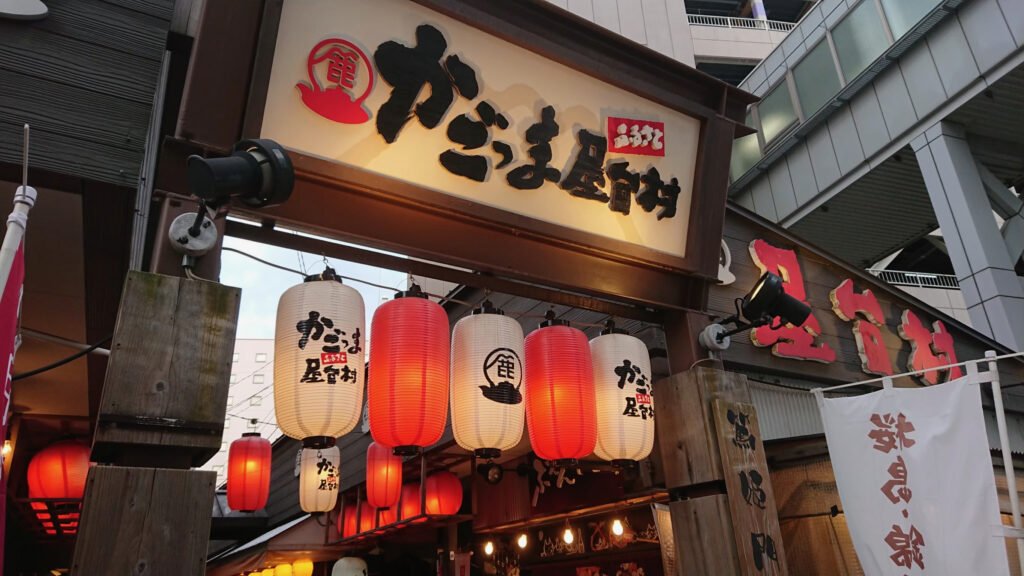
Kagoshima Furusato Yatai Village Is A Colorful Scene At Night.
Conclusion: Why The Black Meat Trio Deserves Its Place in Global Gastronomy
The Black Meat Trio is more than just food; they tell the story of Kagoshima. Kurobuta’s tender meat and Kurodori broth’s deep flavors show the bond between land and culture. Exploring Kagoshima’s markets and restaurants, you’ll see how each piece reflects volcanic soil and care.
Black meat’s fame is not just about taste. It shows respect for the earth and tradition. Chefs worldwide, from Tokyo to New York, create dishes that respect this heritage. They innovate for today’s tastes but keep the essence of Kagoshima’s volcanic heart.
A young chef in Kirishima shares a valuable lesson: true luxury is knowing your food’s origin. This truth is in every Kagoshima dish. Whether it’s a wagyu steak in Kyoto or kurodori ramen in Portland, these meats connect you to history. By choosing them, you support a tradition that blends tradition with new ideas. Let your next meal be a way to preserve culture, one delicious slice at a time.
